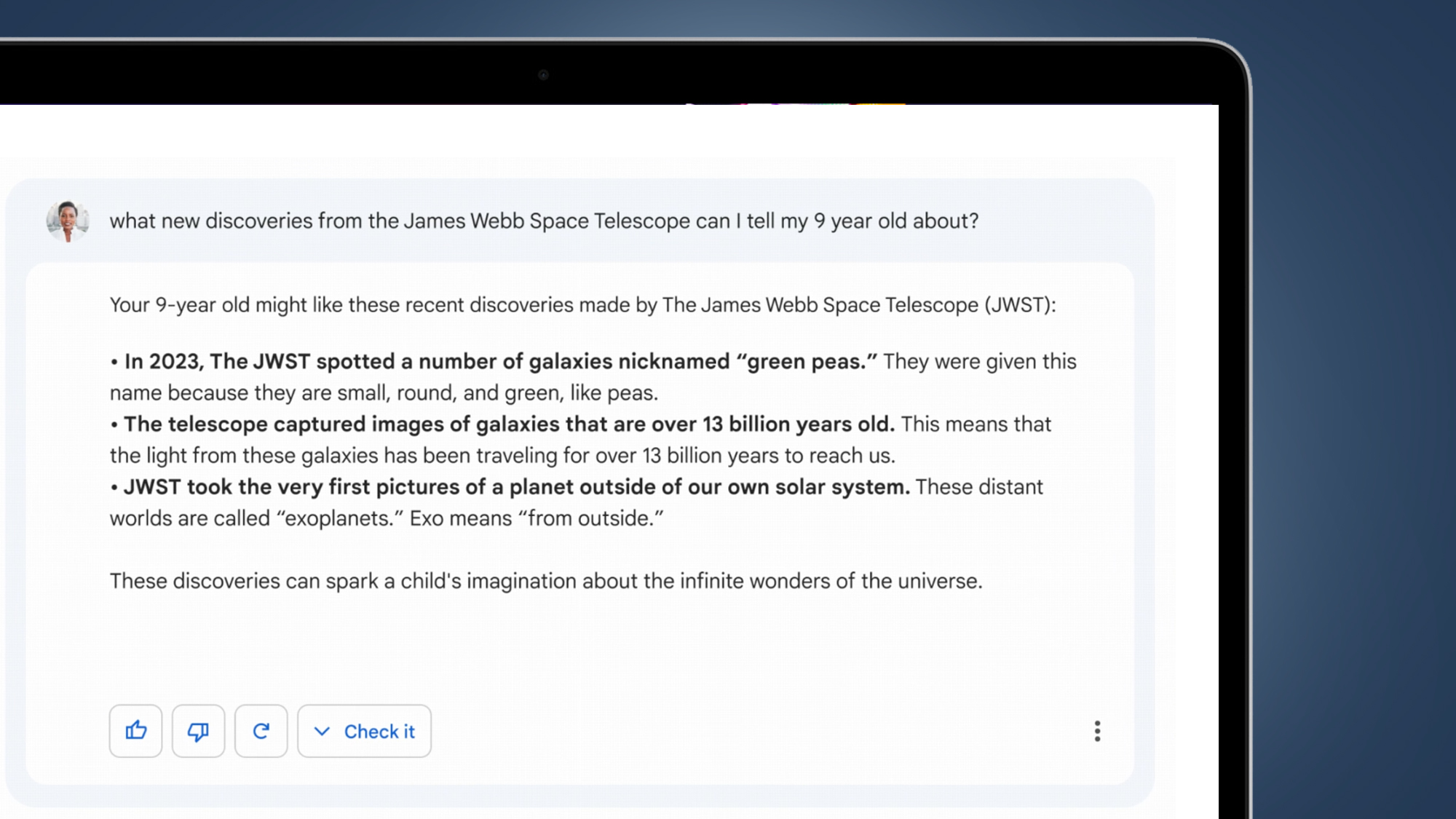Google Bard has hung up its virtual quill, in case you hadn’t realized. The ‘large language model’ AI was first revealed by Google back in February 2023 – in a scramble to compete with Microsoft’s ChatGPT-powered Bing, which had just been launched at the time – but now, Bard no longer exists.
Bard has been superseded by Google’s new AI, Gemini. In fact, Gemini replaces both Bard and Duet AI (the latter was essentially the rival to Copilot Pro in Google Workspace). Now Gemini houses all this technology (and much more) under one very different and more all-encompassing umbrella.
Therefore, there is no latest news for Bard, obviously enough, but you can still peruse this article as an archive of knowledge on the AI that was. Read on below to get a flavor for exactly what Bard did for us in the past, but for all the latest developments with Google’s AI replacement, head here to get the full lowdown on Gemini.

What was Google Bard?
Bard was an experimental AI chatbot built on deep learning algorithms called 'large language models' (or LLMs), in this case one called LaMDA.
To begin with, Bard was released on a "lightweight model version" of LaMDA. Google said this allowed it to scale the chatbot to more people, as this "much smaller" model needed "significantly less computing power".

At I/O 2023 (in May of that year), Google launched PaLM 2, its next-gen language model trained on a wider dataset spanning multiple languages. That model was faster and more efficient than LaMDA, and came in four sizes to suit the needs of different devices and functions.
What could Google Bard do?
In short, Bard was conceived as a next-gen development of Google Search that could change the way search engines were used.
At its launch, Google explained that Bard aimed to be "an outlet for creativity" or "a launchpad for curiosity, helping you to explain new discoveries from NASA’s James Webb Space Telescope to a 9-year-old, or learn more about the best strikers in football right now, and then get drills to build your skills".
Unlike traditional Google Search, Bard drew on information from the web to help it answer more open-ended questions in depth. For example, rather than standard questions like "how many keys does a piano have?", Bard was able to give lengthy answers to a more general query like "is the piano or guitar easier to learn"?

We initially found Bard to fall short in terms of features and performance compared to its competitors. But after its initial public deployment early in 2023, Google Bard’s toolkit came on leaps and bounds, and the AI became far more versatile. It was able to generate code in more than 20 programming languages, for example, or help solve text-based math equations.
Further updates to the AI introduced the ability to listen to Bard’s responses, change their tone using various options, pin and rename conversations, and even share conversations via a public link.

Bard worked well with images, too: you could upload pictures with Google Lens and see Google Search image results in Bard’s responses. Later in its life, Bard was given multimodal functionality, meaning the chatbot could answer user prompts and questions with both text and images (rather than just text only, as was the case initially with Bard).
Bard was also integrated into a range of Google apps and services, allowing users to deploy its abilities without leaving what they were working on. It could work directly with English text in Gmail, Docs and Drive, for example, allowing users to summarize their writing in situ.
Similarly, Bard could interact with info from the likes of Maps and even YouTube. It could understand the contents of certain YouTube videos, making it quicker and easier to extract information from such clips.
from TechRadar - All the latest technology news https://ift.tt/38XZ0lA
via IFTTT
Comments
Post a Comment